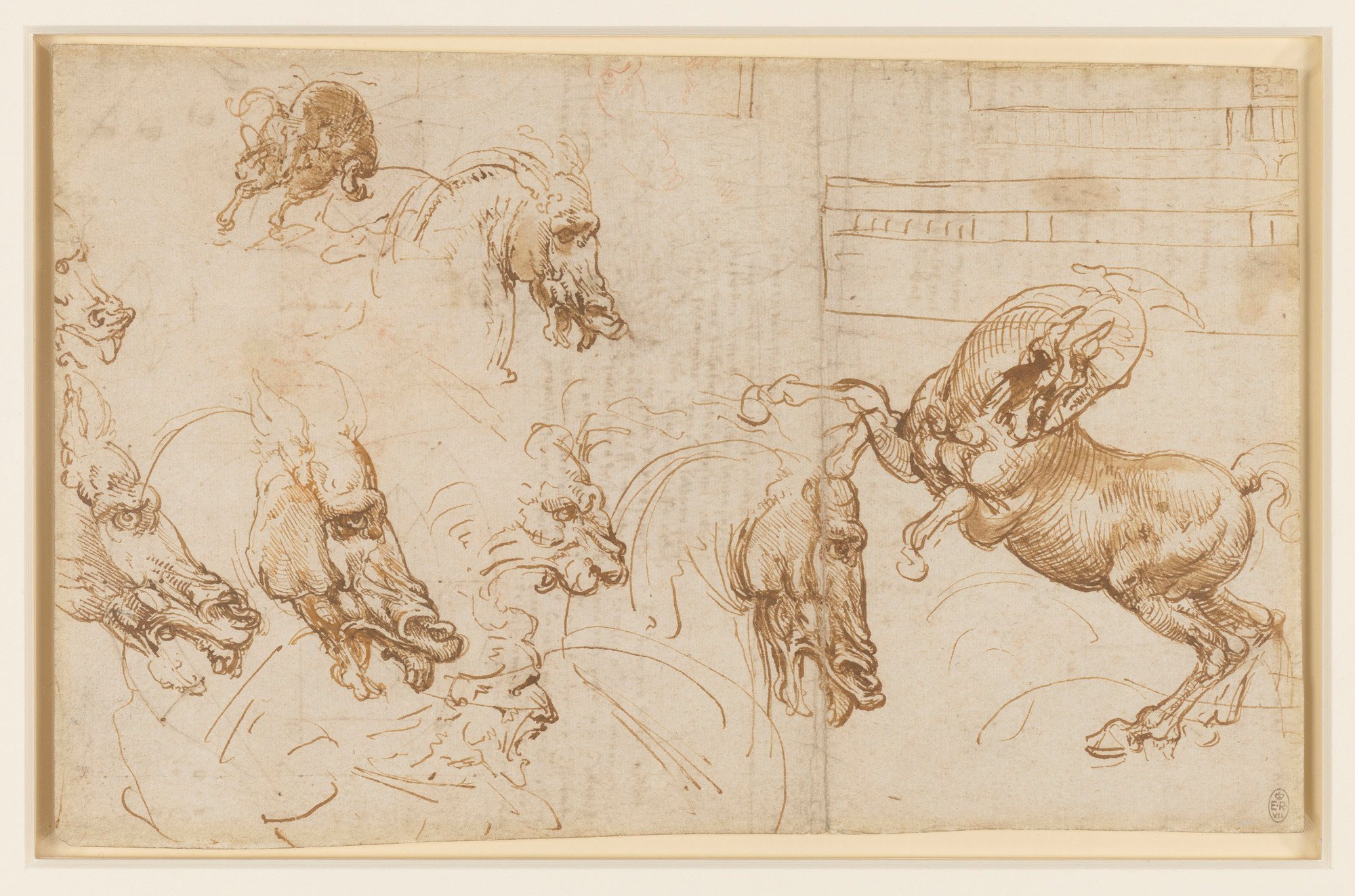
In the pursuit of his study of objects in motion, DaVinci was particularly fascinated with horses. In 1503 Leonardo agreed to paint a huge mural of the Battle of Anghiari in the Sala del Gran Consiglio of the Palazzo della Signoria in Florence. This sketch study, in the Royal Collection Trust, is one of the few surviving studies of this work by his hand.
-

Concept
This small sketch of a horse and rider was drawn by Leonardo as a study of The Adoration of the Magi. Note the 2 positions of the rider’s head drawn on top of one another. While this sketch is only 5” x 3” and was drawn in minutes, it was sold at Christie’s in 2001 for over $8M GBP.
-

Benchmark
Leonardo’s single image of the rearing horse from the Battle of Anghiari was chosen as the defining image and posture to emulate.
-

Precedent to reinterpret
Raymond Duchamp-Villon explored in the early 1900s how the image of the horse was also becoming symbolic of the power of the new machines. He made the dominant front leg composed of both a hoof and a piston. This composition for Duchamp-Villon was a unique interpretation of motive force for his age.
-

Exploration
Leonardo’s goal with his battle scene was to convey pure emotion. This composition explores conveying the motive energy of the horse as efficiently as possible using minimal line in minimal time. DaVinci’s goal seemed ideal to attempt to achieve with East Asian ink wash painting, while also providing the ability to suggest depth by conveying parts of the image closer or farther away based on the tonal intensity of the wash.
-

#27
-

#659
After countless attempts, this composition emerged.
Unanticipated things happened by limiting the time to capture the form to 120 seconds. The left leg steps forward to suggest being closer to the viewer.
By starting with painting the leg using darker ink, the horse’s body fades back, suggesting depth to achieve Leonardo’s sfumato. The contour of the front hoof and cannon were created with a single stroke.
The image forms based on how quickly the ink sets into paper. It is both intended and driven by the energy of motion.
Even as Duchamp-Villon’s pistons in Citroens are being replaced today by Tesla’s electric motors, the horse remains one of the most visceral symbols of motive force.

